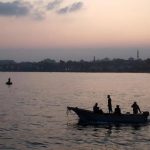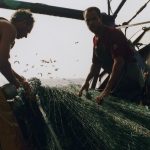Aquaculture can make a significant and sustainable contribution to feeding the world in 2050. That is the conclusion of the booklet, How can aquaculture contribute to feeding 9 billion people in 2050 in a sustainable way?
The booklet is published on 28 January 2011 as an online version and will be distributed in printed form. To succeed, say the contributors, the practice of aquaculture must be developed in a responsible manner. The booklet features introductory texts from FAO and WWF. These lead on to sections on the challenges, the potential role and the opportunities for aquaculture as a provider of protein for the population of the earth in 40 years time.
“The booklet is a follow up to the AquaVision conference we organised in Stavanger in June 2010,” explains Wout Dekker, Nutreco CEO. “We addressed the challenge for agriculture in our 2010 Feeding the Future booklet, which followed on from the previous Agri Vision conference. Aquaculture has an equivalent challenge; contributing to the doubling of food production while halving the footprint. Seafood is widely appreciated as tasty and excellent nutrition. However, the ocean fisheries cannot increase yields without destroying the fish stocks on which they depend. Aquaculture must bridge the gap between fisheries and global demand.”
All stages of the aquaculture value chain are represented, from fishmeal and fish oil production through to fish processing and retailing, with top industry contributors at each stage. They are joined by politicians from China and the EU, industry organisations and academics. In his concluding remarks, Knut Nesse, the Executive Vice-President of Nutreco Aquaculture / Skretting Group, observes, “Aquaculture can deliver seafood that is healthy and delicious. By ensuring we keep sustainability central in the growth of aquaculture we will open oceans of opportunity.”








